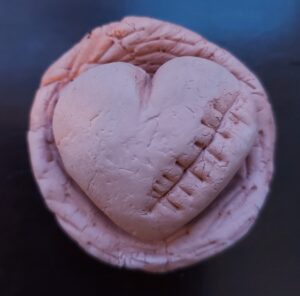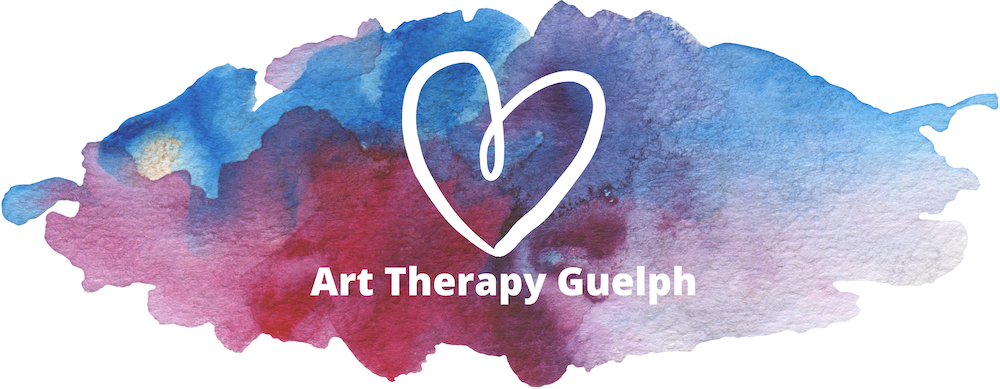
In my practice at Art Therapy Guelph, I use a combination of art therapy and psychotherapy to help my client's mental health. I learned early on that many clients with mental health diagnoses had a history of trauma. I wondered if the diagnostic label was necessary when we could simply acknowledge the damage done by traumatic life events. For some, the negative event is an unpleasant memory that’s accepted and moved past. For others, the event alters the body’s chemistry. Their nervous system gets stuck in fight, flight or freeze mode. The diagnosis of Post Traumatic Stress Disorder (PTSD) may be applied in instances like these. People can be triggered by smells, objects, situations, or noises for example. They may have body sensations like panic, sweats, shaking and/or fainting. PTSD is characterized by reliving the negative event(s) in the form of flashbacks and nightmares.
Researchers note that people who experienced a single event trauma don't tend to develop PTSD when they are aware of and successfully carry out their fight or flee response. They run to safety or fight off their attacker. Those who dissociate during trauma, have multiple traumatic events and are young during the event, may be more apt to develop PTSD. Dissociation happens when people go away in their minds in order to prevent themselves from having a heart attack during the stress. Children often have no choice but to dissociate to protect themselves from events out of their control.[1] Trauma affects the brain by changing the limbic system, disturbing the body’s appropriate production of cortisol and other hormones in the body. It may be related to many other issues, such as eating disorders, alcohol, and drug addiction, co-dependency and excessive independence, social withdrawal, relationship issues, flashbacks, sleeping troubles and so on.[2] Trauma can come in many forms such as emotional, physical and sexual abuse, experiencing natural disasters, and witnessing certain events. When I took my training at the Vancouver Art Therapy Institute it was fascinating to learn that traumatic memories are not stored in the verbal centre of the brain. It is more of a felt sense within the body. New research has found certain activities that are body-based are beneficial for those with PTSD such as art therapy, yoga, kickboxing, meditation and so on.[3]
At Art Therapy Guelph, it's a great honour to witness the healing power of art-making. Art bridges the gap between the unconscious and conscious. It provides opportunities for reflection, growth, and processing. People who participate in art therapy handle things in a safe space and in their own time. Artmaking provides opportunities to develop coping strategies to manage fight or flight reactions, process negative events, develop self-awareness and compassion. It helps with emotional stabilization through body awareness and creating art.
If you would like more information on how Art Therapy Guelph may help you, please contact us today. Contact Heather Caruso | Art Therapy Guelph | Ontario
[1] Van Der Koek, Bessel. (2015) The body keeps score. NY: Penguin Group.
[2] Fisher, J. (2021). Transforming the living legacy of trauma: A workbook for survivors and therapists. WI: PESI Publishing and Media.
[3] Malchiodi. C. (2020). Trauma and expressive arts therapy: Brain, body & imagination in the healing process. NY: The Guilford Press.
